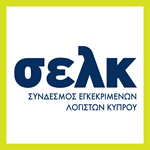
Markella Koukkoulli of the Audit Office of the Republic of Cyprus explains how an environmental audit has raised awareness of threats to the natural treasure trove that is her country’s coastline.
Cyprus’ beautiful and extensive seashore brings hundreds of thousands of tourists and therefore more jobs, facilities and public revenues to our island republic. But mass tourism can also endanger the very things people come to enjoy: the vistas, plants and wildlife (including endangered or protected species) living on or near the beaches.
Together with my colleagues from the Audit Office of the Republic of Cyprus, I helped conduct a coastal management audit aiming to protect our environment. It was vital to discover whether public bodies were doing enough to protect the public’s beaches, and equally important that they devise a financial and environmental management plan which would enable them to prevent damage and reduce the impact of existing threats. I was eager to take part as I have always been particularly sensitive to environmental issues.
Led by Senior Principal Auditor Akis Kikas, we zeroed in on vulnerable factors such as coastal erosion, flora and fauna, clean bathing water and management of waste from recreational marine vessels. We became far more aware of the range of threats to the marine environment, of the risks posed by human interventions, for instance that inadequately designed offshore breakwaters can lead to downdrift coastal erosion.
Though the audit drew on traditional techniques – document review, interviews and questionnaires – it also made use of technology. We combined satellite images of the whole island with the Government’s own digitized data base of land ownership. That allowed us to identify buildings which had encroached into the Beach Protection Zone and to determine the extent of coastal erosion.
We joined environmentalists in observing the Sea Turtle Protection Plan in action, locating nests and examining them for hatchlings which had been left behind. We were even present at the release of a sea turtle rescued from fishing nets. This was highly motivating work for us all.
The audit revealed non-compliance with environmental legislation, inefficient monitoring mechanisms and excessive segregation of duties. Many of our recommendations were therefore about improving coordination and complying with environmental legislation, for example:
The audited entities appreciated the aim of the project and were supportive of our work. There was a lot of media attention and the report continues to be widely cited (publishing it as a free standing document rather than as a section of our annual report helped enormously). It has led to much greater appreciation of how public audit contributes to social and environmental well-being.
 |